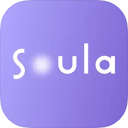What Is Progressive Muscle Relaxation? A Simple Way to Release Stress

Lexy Pacheco
Reviewed by Lexy Pacheco

Do Your Muscles Feel Tight Even When You’re Trying to Relax?
Stress, anxiety, and even insomnia often stem from unresolved muscle tension. If your body never feels fully relaxed, you're not alone.
Even when you try to relax, this physical stiffness often persists. If you've ever asked yourself, what is progressive muscle relaxation or how does it help with anxiety and sleep, you're already on the right track. This technique provides a practical answer to "how do you do progressive muscle relaxation" and offers a clear path to deep calm.
What Is Progressive Muscle Relaxation?
Progressive muscle relaxation (PMR) is a simple, research-backed deep relaxation technique that reduces both physical and emotional tension.
Developed by Dr. Edmund Jacobson in the early 1900s, it differs from passive relaxation by actively tensing and releasing muscle groups. Research confirms "does progressive muscle relaxation work" for stress and anxiety relief.
If you're wondering how do you do progressive muscle relaxation, the method involves tensing and relaxing specific muscle groups to release stress held in the body.
better with Soula

Support for every woman:
✅ A Personalized Plan to reduce anxiety and overthinking
✅ 24/7 Emotional Support whenever you need it Cycle-Aligned Mental Health Tracking — monitor your mood and symptoms in sync with your period
✅ Real-Time Insights into your energy levels and emotional state
✅ Bite-Sized Exercises to help you return to a calm, balanced state — anytime, anywhere
Does Progressive Muscle Relaxation Work?
Yes, studies show that it is always helpful. Research shows that PMR lowers cortisol levels, which helps with stress and anxiety. By calming the nervous system, it helps you sleep better. It's particularly helpful for those with chronic stress, generalized anxiety, or sleep issues. Many use it as a natural alternative to medication. It is a tool for modern life that is based on science.
For ongoing support with anxiety or chronic stress, consider using an AI Therapist for Anxiety and Stress Relief—a convenient option that complements relaxation techniques like PMR.
How to Do Progressive Muscle Relaxation – Step by Step
Find a Quiet Space
Pick a comfortable, distraction-free place to practice how to practice PMR. Sit or lie in a supportive chair, dim the lights, and silence devices to set the scene.
Tense and Release Technique
Start with your feet: curl toes tightly for 5 seconds, then release—this is a core step in progressive muscle relaxation. Move upward to calves, thighs, hands, arms, and shoulders, focusing on the contrast between tension and relaxation.
Breathing and Mindfulness
Pair each muscle release with a slow exhale, a key step in how do you do progressive muscle relaxation. Notice sensations of warmth and loosening, combining physical release with mental calm for full effect.
Benefits of Progressive Muscle Relaxation
Reduces muscle tension and physical stress
It directly targets physical stress. By systematically releasing held tension, you lower your body's overall stress response. This creates a noticeable state of physical calm.
Improves sleep quality
The deep physical calm induced by this method is ideal for sleep. It quietens the body and mind, making it easier to fall asleep. It also helps you achieve a more restful, uninterrupted night.
Helps with anxiety and panic symptoms
How this technique works to help anxiety? It breaks the cycle where mental worry increases physical tension. This feedback loop often fuels anxiety and panic attacks.
Can support chronic pain management
For chronic pain, it helps manage discomfort. Reducing overall muscle tension can alleviate strain on painful areas. It also teaches a mental focus on relaxation instead of pain.
Common Mistakes and How to Avoid Them
Don't hold tension for too long; five seconds is enough. Don't leave out any body parts; covering them all will help you relax completely. Practice in a quiet place; loud places make it less effective.
FAQ About Progressive Muscle Relaxation
Is progressive muscle relaxation safe for everyone?
Yes, but people with muscle injuries should change the intensity.
How often should I practice it?
For best results, try to do it for 10 minutes every day.
Can it help with panic attacks?
Yes, because it quickly lowers physical arousal.
Do I need a therapist to learn it?
No, a lot of people learn on their own with the help of guides or apps.
Make Relaxation a Daily Habit
This easy thing to do can help you stay calm for a long time. Being consistent is more important than being perfect.
Just 10 minutes a day of this proven relaxation technique can significantly improve how your body and mind respond to stress. Give it a shot before bed or during a break tonight. Your body and mind will be grateful.














